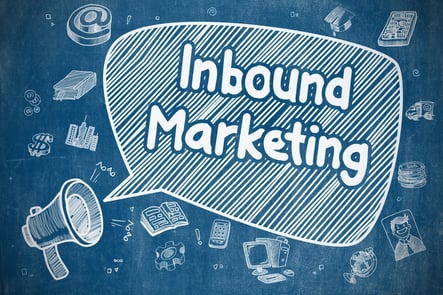
Inbound marketing embodies a fundamental shift in contemporary marketing strategy. The transition has been fueled by the flourishing of e-commerce and the accompanying changes in consumer awareness and buying habits. The simplest way to put it is to look at inbound marketing as a permission-based system of advertising.
Whereas traditional marketing techniques aim to capture the attention of consumers largely unengaged with a product or promotion, inbound marketing seeks to draw the attention of users explicitly engaging themselves with content. An example of traditional or outbound marketing would be a radio ad, and an example of inbound marketing would be a search result for product information. The radio ad happens without consideration to the audience, and the search query targets a consumer actively seeking what you have to offer.
Inbound marketing is a culmination of developing trends in online commerce. It’s a relatively new concept, but there are some basic steps to take to follow the trend.
Visibility
The first step in making your strategy work is to ensure you show up when people are looking for you. SEO is the most straightforward and effective way to accomplish visibility with an inbound marketing strategy. Because of the tremendous degree of competition out there, it’s best to focus on a smaller pool of keywords and optimize them to your fullest ability. You want to choose valuable keywords, but you don’t want to be competing with every loosely affiliated product or service, which is what will happen when you choose the highest-ranking words.
Content
Arguably the most important aspect of an inbound strategy is producing valuable, exciting, and fresh content on your website. You want to educate and interest. The first step is to create a blog with regular updates and thought-provoking content. Your blog can be a great place to incorporate SEO considerations and back-links, but above all, it’s a selling point in itself. The website content should be compelling and informative. Social media campaigns are another great way to both attract visitors and produce attention-grabbing tidbits of content.
Conversion
Once you have leads seeking you out and coming back for more, closing is the next inevitable step. It’s crucial to design enticing calls-to-action and landing pages to streamline your conversions. After all your hard work, you want to facilitate an effective conversion. Additionally, you want to keep track of your successes. CRM, closed-loop reporting, and email are great ways to keep data about your consumers and build trust with existing leads.
An effective inbound marketing strategy is about catering to the curiosity of your market. Its tremendous strength resides in breaking through the nearly impenetrable shell of consumer fatigue. Your average consumer has been so consistently bombarded with advertisements for such a long time that he’s developed a general sense of irritation and distrust with traditional marketing techniques. By producing content that people are actually looking for, you’re targeting the subsection of your ad audience with real motivation, intent, and buying power. It’s time to get with the times.

